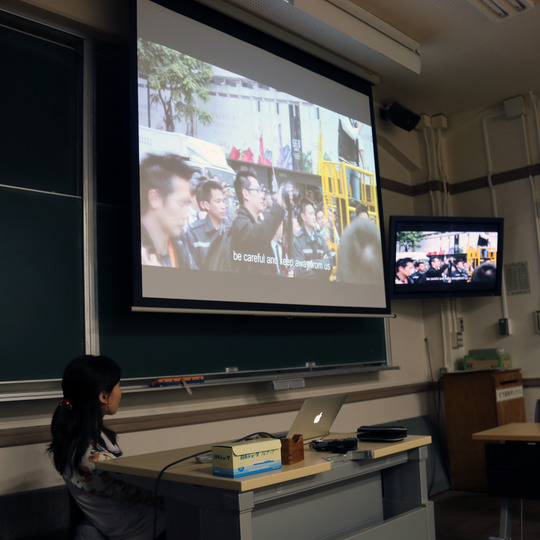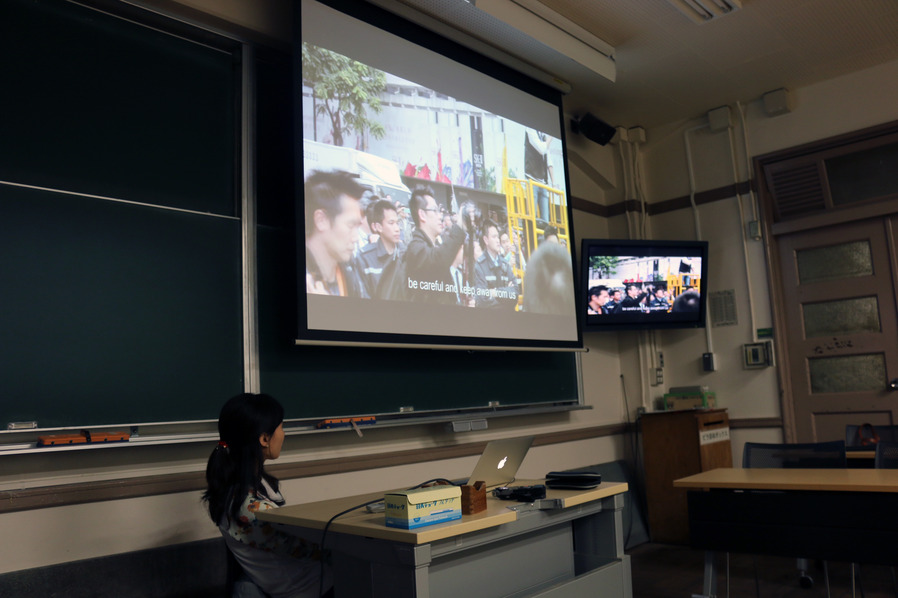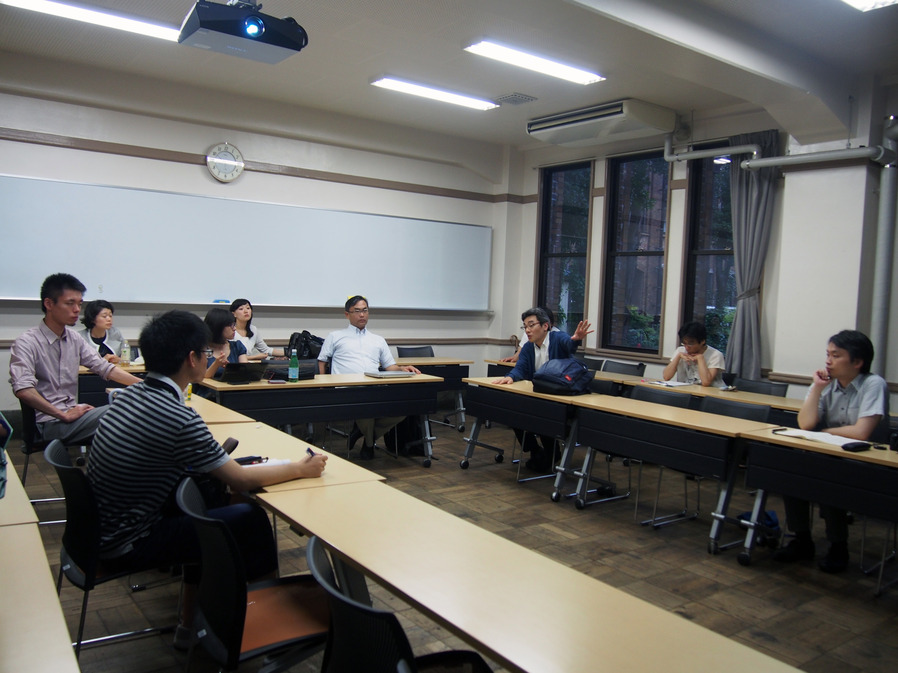
Report: Seminar in Integrated Human Sciences for Cultural Diversity VIII (4th lecture) Lige BAO
- Time and Date:
- 16:50-18:35, Friday, June 5, 2015
- Venue:
- Room 115, 1st Floor, Building 1, The University of Tokyo, Komaba
- Organized by:
- The "East Asia" Unit, Integrated Human Sciences Program for Cultural Diversity, The University of Tokyo
On June 5th, we had an opportunity to hear the final report on the Hong Kong Umbrella Movement study trip conducted by Project 2 staff members and IHS students in March, 2015. During class, we had a chance to watch the documentary made by students of the Chinese University of Hong Kong, after which all who attended enjoyed a heated discussion. The idea of first hand experience is a very important aspect of this activity. Only by going to Hong Kong could we experience the spirit of the Umbrella Movement and construct a more comprehensive picture of the way in which the people of Hong Kong participated and felt during this time period. This experience has provided an important foundation for further discussion and a more complete understanding of the Umbrella Movement.
The documentary was divided into the following three parts, reflecting key places and themes: 1) Mongu Kok during the early days, 2) Causeway Bay during the final days, and 3) the story of an important student leader named Karl. With the help of these precious videos, which showed how the young students gathered in the streets, we were able to experience the fever of excitement they felt as they tried to make their voices heard by the government. In the second video, which focused on the last day of the movement, we saw older Hong Kong citizens participating and refusing to return home. Although the order "to keep calm!" was repeated several times in the first video, and another order, to "leave in an orderly way, immediately" in the second, we saw how citizens of Hong Kong tried to protect and manage their movement. The third video was very interesting to watch; in it, the protagonist, Karl, shared his views on the movement and described how he had personally faced obstacles, not only from the government, but also from his own family, who put extra pressure on him. Karl’s father tried to keep him away from the seemingly "dangerous activity." His situation revealed the opposing ideas held by different generations in Hong Kong, and this later became a discussion topic in our class.
After the documentary, we discussed several topics related to this movement. The first key word was "connection." We discussed how citizens became involved with the movement and how the movement itself could actually influence present day citizens and future social movements. This constitutes a "connection" within this specific area, and it also suggests the idea of historical connection. The documentary showed us how people use the media to network. Through the involvement of the mass media, social movements themselves are able to change their way of communicating and level of influence. We discussed the influence of social movements, and the historical impact they have had on the people of Hong Kong. The conservative attitudes of older Hong Kong citizens (in contrast to the young Hong Kong students) reflect a historical legacy that remains in the hearts of the people of Hong Kong. Another "connection" involves the network of civil societies that exist in the various countries and regions of East Asia. Hong Kong and Taiwan seem to have made a connection after the movement. The idea of experience sharing is very important for the future development of the East Asian region. We also discussed the role of universities. However, our conclusions were somewhat disappointing; we felt that such movements usually happen accidentally and have their limitations, and that the connections are often lost.

Afterwards, both professors and students questioned the various explanations for the different types of social attitudes and movements in Asian countries. As Japan is no longer very active, several participants expressed concern about Japanese social movements. Apart from historical reasons, Japanese behavior was cited as a way to explain this phenomenon. While Chinese people are relatively brave and willing to take the risk of speaking out, Japanese people may be inhibited by their sectarian way of working.
The last thing we talked about was the importance of the concept of "translating subjectivity." This notion of translating goes beyond the translation itself. Our professor proposed a metaphor: although Japan has translated so many foreign books, the Japanese people might not really understand situations that have occurred abroad, and might even consider inflicting those situations on Japanese society. In other words, we can’t tell whether we really understand each other. As each person sees things differently and experiences a different context, the way we try to genuinely improve communications and work together to develop future movements will be a very important issue for the future of this region.
Although the documentary shown in class didn't fully explain the background of the Umbrella Movement, its vivid picture of the new generation of Hong Kong students enabled us to feel the tension between the beliefs of the New Hongkongese and Hong Kong’s social and political situation. Our discussion about this event in Hong Kong has raised a valuable question about the future of this region.

報告日:2015年6月19日


